#Nepenthes mirabilis var globosa
Text




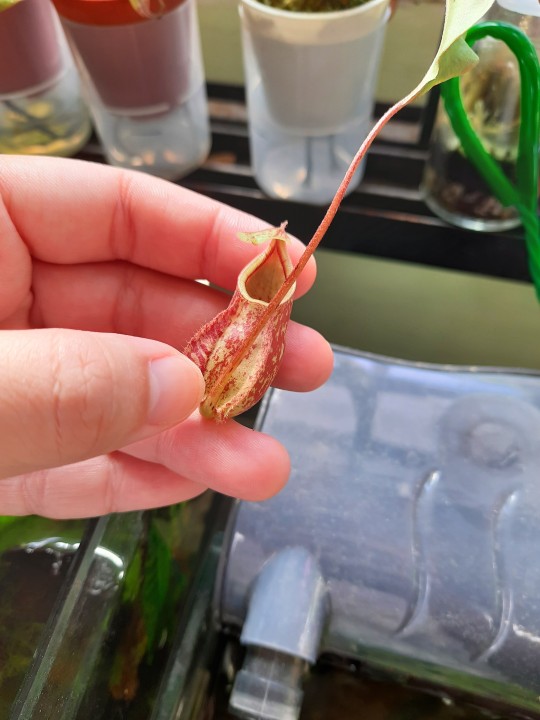
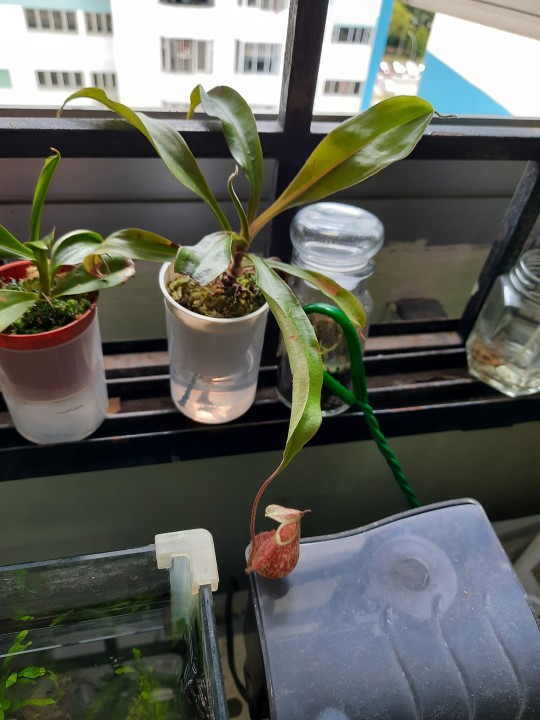
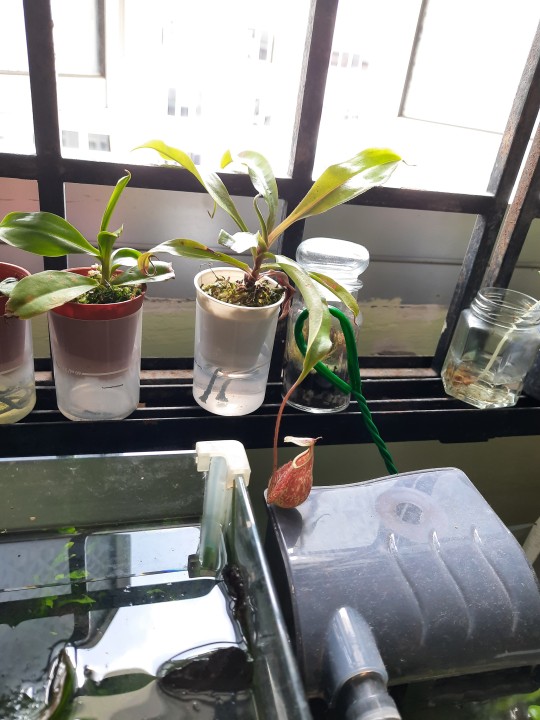
im so excited for this pitcher to pop u have no idea....its been fuckin. months!!! since it pitchered the first time, and maybe a year since i got this plant.
First pic is current plant, the rest is back when it pitchered the first time which was uhh.. 15 january this year 2022!! im so excited did i mention how excited i am. im in love with this plant my god.
btw its a nepenthes viking (mirabilis var. globosa) x rafflesiana GOD the best of both sp tbh. cool spotting and also round and fat. cool lip shape....im in loVe wiTH THIS PLANT!!!!
#nepenthes#pitcher plants#nepenthes mirabilis 'viking' x rafflesiana#carnivorous plants#plants#qpost
1 note
·
View note
Text




Clockwise from top left: Nepenthes maxima, N. sibuyanensis x mirabilis var. globosa, 'Miranda', and N. robcantleyi x veitchii.
42 notes
·
View notes
Photo

Nepenthes ampullaria x mirabilis var. globosa. BE 3989 #nepenthes #pitcherplant #carnivorousplant #carnivorousplantsofinstagram #bergenwatergardens (at Bergen Water Gardens) https://www.instagram.com/p/CMgVuFnrIYS/?igshid=19fkwzxvjp9b3
0 notes
Note
hello!!! I've been combing the internet for some good info on n. argentii and n. bellii since I'm super keen on the really tiny species, do you have any good info on them or know any other smaller nepenthes? where do you usually look for reputable sellers if you're looking to buy species that aren't super common? thanks for any help you can offer! 8 )
ok i hope you dont mind me taking a hot second to talk about these smol carnivorous nepenthes babs and related smol carnivorous nepenthes babs because i never get to talk about the individual nepenthes species and i love them so much
background knowledge: nepenthes is a genus of tropical pitcher plants. they are largely vine-based plants that survive off of catching bugs in leaves adapted into cup-like appendages filled with digestive fluid; insects fall in the digestive fluid and are eaten alive. all nepenthes species are, in essence, a variation on this theme.
ok first, nepenthes argentii is like……..so good and pure………like i want one too but im poor and they’re rather hand to care for (ill get there in a hot second). this species is the smallest nepenthes species known to date, and was discovered in 1989 on the peaks of a few mountains on a small island in the phillipines. it looks like this: (x) (x)
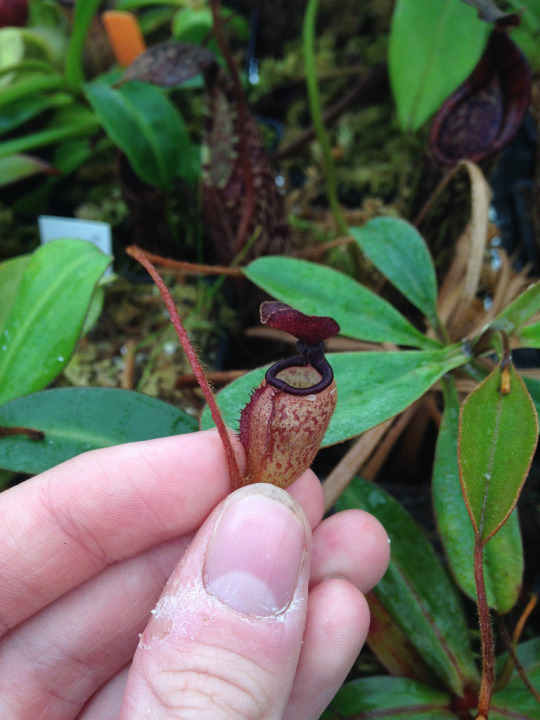
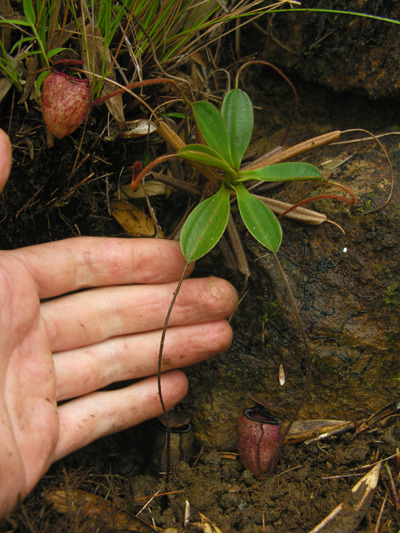
(honestly this is like. a very photogenic small bab so you can find more pics here)
this plant. this plant. this plant is like. the purest plant. like my favorite literature ive read so far on it is this account published in a ICPS newsletter of a small 2005 expedition into the mountains to gather more information and samples on both argentii and the other main nepenthes species living there, sibuyanensis. lets see what these scientists have to say about these smol boys in the wild:
“…From our observations we conclude that N. argentii is almost an obligate petrophyte growing in the rock crevices or among boulders, where it may avoid surrounding low vegetation…We did not find any plants under the shrubs, but cannot exclude the possibility of having missed them. Nepenthes argentii is not very frequent and the whole population consists of some hundreds of plants- the only ones in the world! We counted 14 rosettes in the largest group, but whether it was an individual plant or more plants in one bunch, we are not sure. Most of the plants consisted of an individual rosette usually with very low stems; the maximal measured height was 25 cm.”
the rest of the paper talks about a variety of things, including the small seed yield, plant care, and it’s habitat. this plant is difficult because of it’s slow growth and the fact that it’s a very high highland plant with few blooms. by “highland” i mean that it grows at very high elevation where it’s cooler. for these plants to grow, many serious growers choose to build special refrigeration chambers that replicate a cloud forest in both humidity and temperature (and clouds, using special foggers and fans!). this particular species is less rigid in its temperature needs, but some highland species are veeerrryyy specific (within a 10-20 degree window at all times).
aaaannnyway. these are very hard to get a hold of due to their low flowering rates and slow growth and germination. generally, I try to stick to reputible US sellers (california carnivores, Sarracenia northwest, and the like) but there are a few international sellers that are pretty reputable, the best being Wistuba, a massive international carnivorous plant store run by botanist Andreas Wistuba. this site tends to have some of the more exotic ones (Wistuba focuses professionally on taxonomy, and therefore has some stranger specimens from time to time) but I’ve heard that these plants aren’t always as healthy as other plant stores that might charge a little more. for carnivore plant stores in general, I would hiiiighhhhly recommend the savage garden subreddit’s list of vendors.
side note: on the note of really touchy rare highland species, something thats permanently featured on the sidebar of the savage garden subreddit is an article published in an ICPS issue back in 2003. its written by a dude with an electrical engineering phd who converted a literal chest freezer into a very specific niche habitat for one of the rarest and touchiest highland species in existence, Nepenthes villosa. to give an example of what this guy is up against in this article, this is a plant that needs nights between 36 and 39 degrees F and days between 55 and 61 degrees F. it’s…extremely impressive. please read it, or at least look at the pictures of this amazing feat. you may be wondering, ‘what plant could possibly possess a man to convert a chest freezer in to an extremely specific growth environment for a plant?’ and the answer is this one (nepenthes villosa):

anyway. so next is n. bellii, and I…actually don’t know much about this one, but it’s a very cute and good smol bab and im excited to know about it now:

as for more smol babies, i looooove smol nepenthes species so I have a few recommendations!
Nepenthes glabrata (highland/highland intermediate):

Nepenthes ampullaria (lowland i think??? also pic is of a cultivar in coloration terms)

a really pretty tiny one is the Nepenthes mirabilis var. globosa hybrid! again, hybrids are cheaper and often intermediate-climate and heartier:

nepenthes aristolochioides hybrids can be small and affordable depending what its mixed with, and also are usually intermediate and way heartier in terms of care. or, of course, you could go for the purebred species, which can be, um…kind of expensive. not saying the non-hybrids aren’t worth it though, i mean look at that:
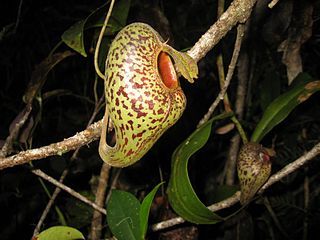
and then, of course, if you aren’t set 200% on a nepenthes species, you could go for a cephalotus follicularus, a species from southwestern australia that I’m personally quite fond of. It’s a slow grower, small, compact, and is very rewarding! some people say they’re hard to care for, but in my opinion they really aren’t.

#khayr#THIS WAS SUCH A LONG ANSWER LIKE WHY AM I LIKE THIS WHEN SOMEONE MENTIONS PITCHER PLANTS#carnivorous plants#plont asks#asks#long post
146 notes
·
View notes